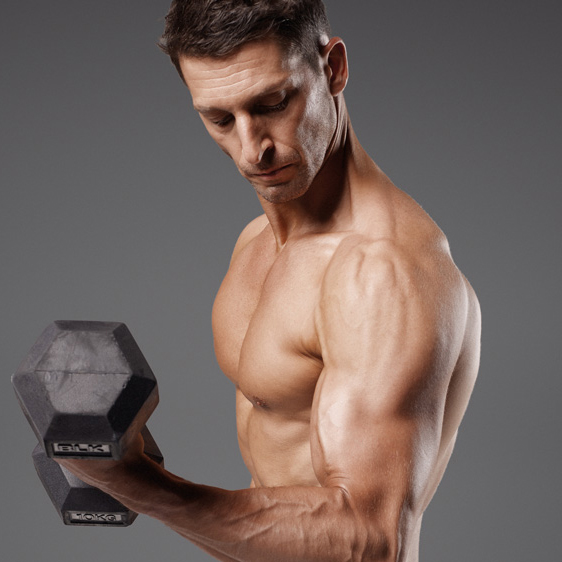Why You Should Keep A Workout Journal
Start keeping a training log and transform your physique faster, says Ultimate Performance founder Nick Mitchell

Do you keep a training diary? If not, you’re making a big mistake – it’s a key part of what it takes to build a bigger, stronger, leaner body. “For the best physique results you must keep detailed records of your workouts,” says Nick Mitchell, founder of the global personal training gym business Ultimate Performance. “You may be able to remember how much weight you lifted on your favourite exercise last week, but it is unlikely that you’ll recall this for every exercise in your programme.”
What’s even less likely is that you can remember how good your technique was or how challenging you found a specific weight during a given set.
“Recording your workouts can be highly motivational because it allows you to look back at the progress you have made and set goals for upcoming workouts,” says Mitchell. “The purpose of your workout journal is to document your progress, not to impress people. Crediting yourself with the extra rep performed with dubious technique doesn’t help you, and when you eventually complete the rep with proper technique, you will fail to notice your progress and think you’ve hit a plateau.”
Starting Your Training Journal
You can either record your workouts with a pen and paper or keep a digital version using your mobile phone or tablet. “Only use a phone or other device if you trust yourself not to get distracted by other apps,” says Mitchell. “Before each workout, spend five to ten minutes reviewing your previous performances. Once this is done, set realistic targets for each exercise ahead.” Here are some examples.
Target 1: Increase the weight
If you completed the rep target with a given weight and are happy with your technique, you need to decide how big an increase to make. You should base this decision on the number of reps you had in reserve above the target number on the previous set. Be prepared to adapt the rep target if the next available weight is too big an increase.
Target 2: Do more reps with the same weight
If you failed to complete the rep target on your final set with a given weight, then you should repeat the same weight and aim for more reps.
Target 3: Reduce the weight
If you were overly ambitious with your weight selection or unhappy with your technique, then you should reduce the weight by an appropriate amount.
Get the Coach Newsletter
Sign up for workout ideas, training advice, reviews of the latest gear and more.
Keeping Your Training Journal
Once you’ve identified your goal or goals for the forthcoming session, note the date and time, then make any additional notes on factors that may affect your performance, such as poor sleep, feeling under the weather or training in a different gym. The more notes you make, the better informed you will be to analyse the session in context.
As for recording the workout details, you need to capture the information that will provide valuable insights into your performance. After each set, record the exercise name, the amount of weight lifted, the number reps completed and how you felt.
For instance, if you finished your target number of sets of a given move and felt like you had more in the tank, make a note of how many additional reps you could have completed with proper technique, and then write “INC W” as a note for you to increase the weight next time you do this move. If you struggled, write down the rep number at which you reached failure or had to abandon the set with an “F” next to it, with a note to either “DEC W” (decrease weight), “DEC R” (decrease reps) or “REP R” (repeat reps). You can use up or down arrows instead of INC and DEC if you prefer, or create your own code to record your workouts quickly.
Once you start taking notes you’ll be amazed at how useful it is – and how essential it quickly becomes – to successful workouts. Your journal will be a much-wielded weapon in your fat-burning and muscle-building arsenal.
This is an edited extract from Principles Of Muscle Building Program Design: The UP Encyclopaedia of Personal Training Volume 1 by Nick Mitchell and Jonathan Taylor. It is available now on amazon.co.uk
More From Nick Mitchell
- How To Pick The Right Weight
- The Fat-Loss Diet Rules Ultimate Performance PTs Teach

Joe Warner is a highly experienced journalist and editor who began working in fitness media in 2008. He has featured on the cover of Men’s Fitness UK twice and has co-authored Amazon best-sellers including 12-Week Body Plan. He was the editor of Men’s Fitness UK magazine between 2016 and 2019, when that title shared a website with Coach.
